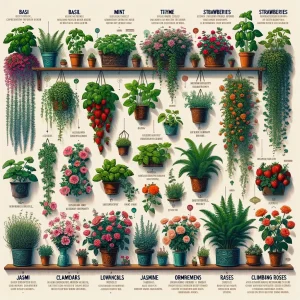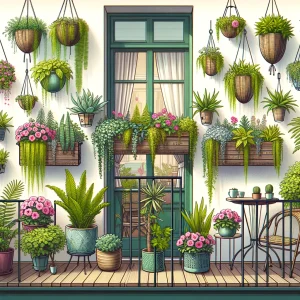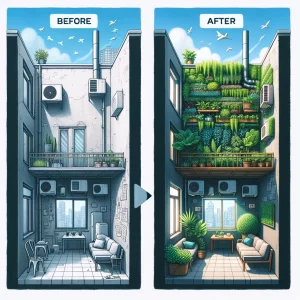Vertical gardening emerges as a beacon of innovation in the modern quest for greener living spaces and the maximization of limited areas. Importantly, it’s an approach that beautifies your space and contributes to a healthier environment. Specifically, this blog post is crafted for beginners, offering a guide to vertical gardening, from understanding various systems to selecting the right plants and navigating through everyday challenges.

Vertical Gardening Systems Explored
Firstly, trellises and green walls: Trellises are frameworks that support climbing plants, perfect for edibles like tomatoes and ornamentals such as climbing roses. Similarly, green walls, also known as living walls, are panels of plants grown vertically using hydroponics. These systems are visually stunning and efficient in purifying the air.
Secondly, hanging baskets and vertical planters: Hanging baskets are ideal for small spaces and balconies and are suitable for ferns, succulents, and trailing plants like petunias. Conversely, vertical planters offer a structured way to grow various plants, including herbs and strawberries, in a confined space.

Plant Selection for Vertical Gardens
When choosing plants for your vertical garden, consider both edibles and ornamentals. For instance, edibles like herbs (basil, mint, and thyme) and strawberries are perfect for their low maintenance and high yield. Additionally, ornamentals such as ferns and succulents require minimal care, making them ideal for beginners. Moreover, climbing plants like jasmine or climbing roses add fragrance and beauty to your vertical space.

Benefits of Vertical Gardening
Furthermore, improved air quality and space efficiency: Vertical gardens can significantly enhance air quality by filtering pollutants and producing oxygen. They make the most of small spaces, turning bare walls and balconies into lush, productive areas.
Additionally, aesthetic enhancement: Beyond functionality, vertical gardens add a layer of aesthetic appeal to your living space, creating a serene and inviting atmosphere.

Overcoming Challenges: Maintenance Tips for Beginners
Regarding watering techniques: Understanding the watering needs of your plants is crucial. Many vertical gardening systems come with built-in irrigation solutions. For those that don’t, consider a drip irrigation system or a simple watering schedule to keep your plants hydrated without overwatering.
Concerning sunlight requirements: Ensure your vertical garden is positioned to receive the right amount of sunlight. Most edible plants require at least six hours of direct sunlight daily, while ornamentals may thrive in partial shade.
As for pest control: Watch for pests and address any infestations early. Natural remedies like neem oil can be effective and environmentally friendly.
Success Stories to Inspire
Moreover, many beginners have transformed their balconies and small yards into verdant retreats, growing everything from lush ferns and flowers to herbs and vegetables. These success stories serve as a testament to the potential of vertical gardening to enhance our living spaces and lives.

Embrace the Vertical Gardening Journey
Finally, as you embark on your vertical gardening journey, remember that every small step contributes to a greener, more sustainable world. With the right setup, plant selection, and care, your vertical garden will thrive and become a source of joy and pride.
Whether dealing with a tiny balcony or a compact yard, vertical gardening offers a path to transform your space into a vibrant oasis. Happy gardening!